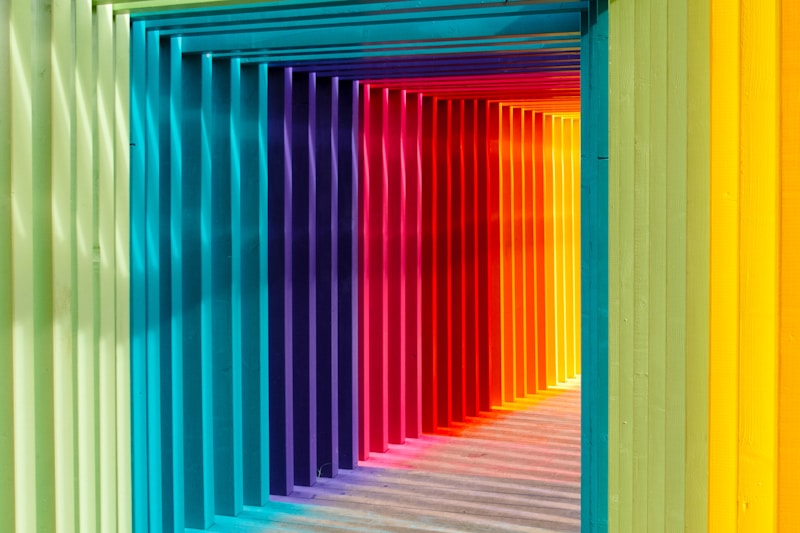Discover the Beauty of Elegant Color Palettes for Your Design Projects
What Are Elegant Color Palettes?
In the realm of design, color is not just an aesthetic choice; it plays a crucial role in conveying emotion, identity, and functionality. Elegant color palettes are combinations of colors that embody sophistication, beauty, and harmony. These palettes can significantly enhance the visual impact of various projects, whether in fashion, interior design, graphic design, or web development. In this article, we will explore the concept of elegant color palettes, provide examples, and discuss how to effectively use them in your designs.
The Importance of Color in Design
Color influences perception and can transform a simple design into a striking masterpiece. When correctly implemented, elegant color palettes can evoke feelings of luxury, calmness, and excitement. Here are a few reasons why color is fundamental to design:
- Emotional Connection: Colors elicit emotional responses. For example, blue often evokes trust and serenity, while red can ignite passion and energy.
- Brand Identity: Color choices can define a brand's identity. Companies like Starbucks use a distinct green to evoke feelings of freshness and sustainability.
- Visual Hierarchy: Color can guide the viewer's eye, drawing attention to crucial elements within a design.
Creating an Elegant Color Palette
Creating an elegant color palette involves understanding color theory and the psychological implications of different hues. Here are some steps to guide you:
1. Understand Color Theory
Color theory encompasses the principles of how colors interact. The color wheel is a fundamental tool, showcasing primary, secondary, and tertiary colors. Elegant palettes often use complementary colors, analogous colors, or monochromatic schemes to maintain harmony.
2. Choose a Base Color
Your base color serves as a foundation for your palette. It should reflect the tone you wish to set. For instance, a soft lavender can impart elegance and femininity, whereas a deep navy might suggest professionalism and sophistication.
3. Add Complementary Colors
Once you have your base color, incorporate complementary colors that enhance and balance it. For example, a palette of soft blush pink, deep teal, and warm beige can create an elegant yet inviting atmosphere.
4. Consider Neutral Shades
Neutral colors, like whites, grays, and browns, are essential in creating contrast while allowing your palette to shine. They can be used for backgrounds, text, or to tone down more vibrant colors.
Examples of Elegant Color Palettes
Below are some examples of elegant color palettes and the emotions they evoke:
| Palette | Colors | Usage |
| Blush & Teal | #FFC0CB (Blush), #008080 (Teal) | Weddings, Feminine Brands |
| Classic Monochrome | #000000 (Black), #FFFFFF (White) | Corporate Branding, Luxury Products |
| Soft Earth Tones | #C2B280 (Beige), #8B5B29 (Brown), #FFE4B5 (Light Peach) | Interior Design, Eco-friendly Products |
| Pastel Dreams | #FFB6C1 (Light Pink), #87CEFA (Light Blue), #FFEFD5 (Light Peach) | Children's Products, Spring Collections |
Utilizing Elegant Color Palettes in Various Applications
1. Graphic Design
In graphic design, the right color palette can significantly impact the overall effectiveness of visual communications. Whether you're designing a logo, brochure, or website, an elegant palette can help convey the message and identity of the brand more effectively. Consider how the colors resonate with the audience and the emotions you want to evoke.
2. Interior Design
Elegant color palettes play a pivotal role in creating ambiance in interior spaces. A well-thought-out color scheme can make rooms feel more spacious, inviting, and harmonious. For instance, using a palette of soft blues and whites in a bathroom can create a soothing spa-like atmosphere, while deeper hues in a living room can produce a more dramatic and cozy setting.
3. Fashion and Textiles
Fashion relies heavily on color to set trends and convey messages. Designers often gravitate towards elegant palettes that enhance the silhouette and fabric choices. For example, a collection featuring deep emerald greens paired with gold accents can evoke a sense of luxury and refinement.
Trends in Elegant Color Palettes
As trends evolve, so do color preferences. Here are a few current trends in elegant color palettes:
- Earthy Tones: Colors inspired by nature, such as terracotta, sage green, and muted yellows, are gaining popularity in various design fields.
- Muted Shades: Soft, muted colors like dusty pinks and cool blues are favored for their subtle elegance.
- Monochromatic Schemes: Using different shades of the same color creates a sophisticated and cohesive look.
Conclusion
Elegant color palettes are essential tools in the arsenal of any designer, helping to create visual appeal and emotional connections. By understanding color theory, choosing the right base, and carefully selecting complementary colors and neutrals, you can enhance your designs across various applications - from graphic and interior design to fashion. As you embark on your design journey, consider exploring the examples above, keep an eye on current trends, and don’t hesitate to experiment to find the palette that best suits your vision.
Final Tips: Always remember to consider your target audience and the message you wish to communicate. It can be useful to gather feedback and experiment with different combinations before finalizing your color palette.
